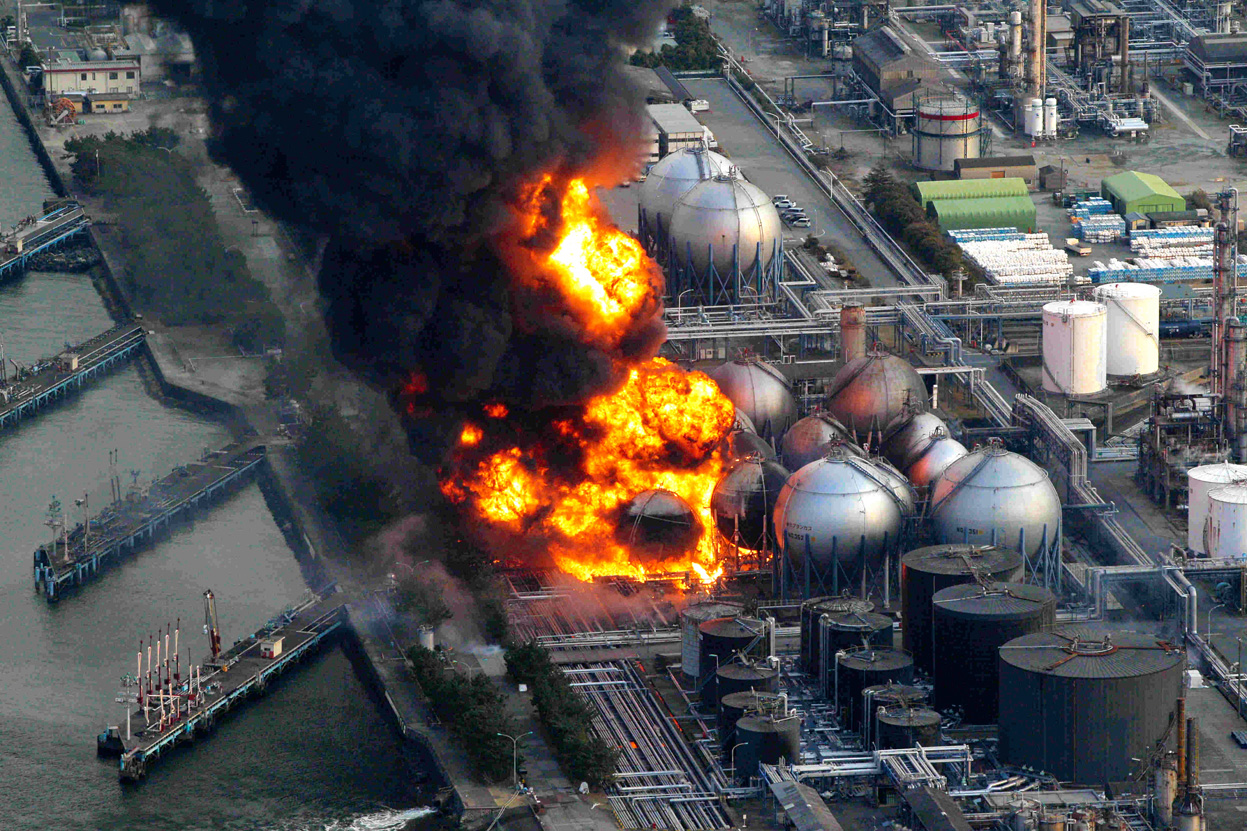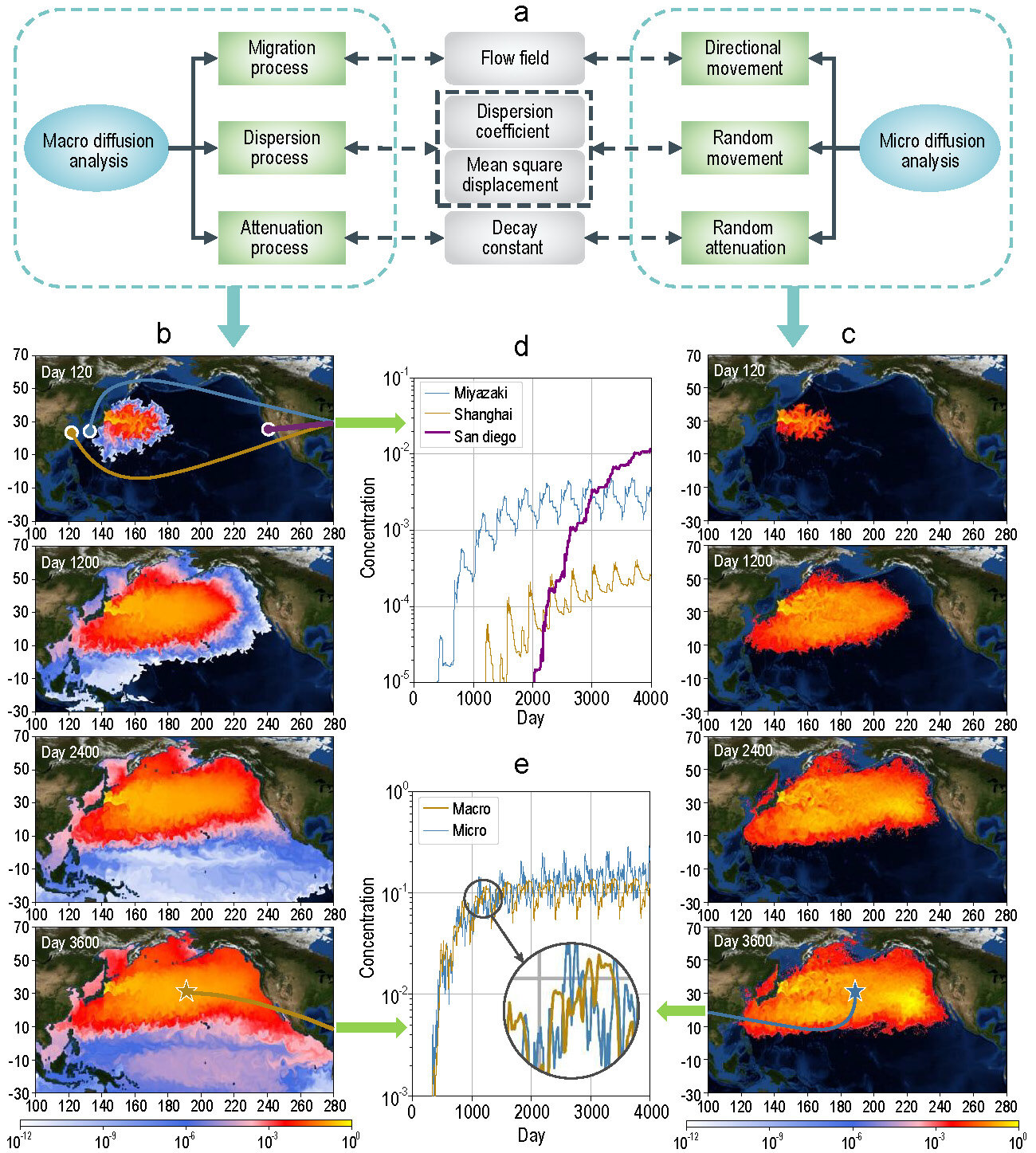Chinese scientists from Tsinghua University have mapped out the potential global effects of Fukushima radioactive discharge, suggesting that if the contaminated water is discharged to the ocean, it is expected to sprawl across the entire Pacific Ocean within 10 years.
The Japanese government announced in April that it would start dumping contaminated water from around the spring of 2023. China and other countries have expressed serious concerns about Japan’s decision to discharge contaminated water from the Fukushima nuclear station. China is calling for an open, transparent and responsible approach to prudently deal with its disposal.
The study showed that within:
- 240 days after discharge the pollutants could affect China’s coast
- 1,200 days the polluted water would spread to almost the entire North Pacific region, before spreading southward to the South Pacific Ocean and the Indian Ocean
- 2,400 days the polluted water would spread to the North America, before reaching the West coast of the United States
- 3,600 days after discharge, the pollutants will have covered almost the entire Pacific Ocean
[ECNS.cn]

____________________________
Tracking contaminated water from the Fukushima nuclear accident – Tsinghua University
In a paper published in the National Science Review, a team from Tsinghua University analyzed the diffusion process of the treated Fukushima accident contaminated water to be discharged into the Pacific Ocean from 2023. Results show that the tritium, the main pollutant in the radioactive water, will spread to the whole North Pacific in 1200 days, which is important to formulate global coping strategies.
On 26 August 2021, the Japanese Cabinet passed a bill to discharge the treated water into the Pacific Ocean to alleviate the problem of nuclear wastewater storage. However, large amounts of radionuclides can affect marine biological chains and adversely influence marine fisheries and human health. The global effects of Fukushima discharge, which will last 30 to 40 years, remain unknown. Thus, identifying the diffusion process of radioactive water in oceans is critical.

To solve this problem, a team from Tsinghua University, China, developed analysis models from both macroscopic and microscopic perspectives, to simulate the diffusing process of the nuclear elements. The first focuses on the overall distribution of pollutant, while the second focuses on the behavior of the individual pollutant. Macro simulation results (Figure b) revealed that in the early stages of pollutant discharge, the polluted area increases rapidly, reaching 30 degrees of latitude × 40 degrees of longitude within 120 days. Due to ocean currents, the pollutant diffusion speed is considerably higher in the latitude direction than that in the longitude direction.
In 1200 days, the pollutants will cover almost the whole North Pacific region, reaching as far as the coast of North America to the east, and the Australia to the south. The pollutants will then spread rapidly to the South Pacific Ocean, under the influence of the equatorial current along the Panama Canal. The Indian Ocean will also be influenced, due to waters infilling from north of Australia, in 2400 days. On day 3600, the pollutants will cover almost the entire Pacific Ocean. Notably, although the contaminated water is discharged near the Japanese island, the contamination center (represented by yellow and red in Fig. b and c) will over time move eastward along the 35 degrees N latitude line.Play00:0000:40MuteSettingsPIPEnter fullscreen

The team plotted the pollutant concentrations in adjacent waters of Miyazaki, Shanghai and San Diego, all near 30 degrees N, as shown in Figure d. Miyazaki is polluted first, followed by Shanghai and San Diego, in order of their distances from Fukushima. According to the trend of the three curves, the pollutant concentration in each region increases rapidly at the beginning before stabilization. Although San Diego is the last city among the three to be affected, the steady-state concentration of pollutants in its adjacent waters is even higher than that near Miyazaki.
The differences in pollutant concentrations near Miyazaki, Shanghai and San Diego result from the strong ocean current near Japan. Specifically, Fukushima is located at the confluence of Kuroshio (northward) and Oyashio (southward). Therefore, most pollutants do not migrate towards north and south along the land edges but spread eastward with the North Pacific west wind drift. In the early stage of treated water discharge, its impact on the coastal Asia should be focused. However, at a subsequent stage, the high concentration of nuclear elements near North America will definitely become a concern.
SOURCES:
Science China Press, December 2, 2021
https://phys.org/news/2021-12-tracking-contaminated-fukushima-nuclear-accident.html
ECNS / CGTN, 2021-12-04.
http://www.ecns.cn/news/sci-tech/2021-12-04/detail-ihatptun5310586.shtml
More information: Yi Liu et al, Discharge of treated Fukushima nuclear accident contaminated water: macroscopic and microscopic simulations, National Science Review (2021). DOI: 10.1093/nsr/nwab209
Leave a Reply
You must be logged in to post a comment.